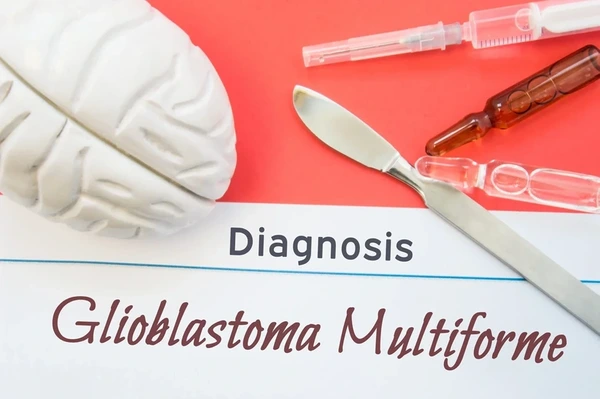Glioblastoma multiforme (GBM) is a type of primary brain cancer that is highly aggressive and difficult to treat. It is one of the most common malignant brain tumors in adults, accounting for over 50% of all primary brain cancer cases. GBM is most commonly found in people aged 45–70 years and is more likely to occur in males than females.
Symptoms
The symptoms of GBM can vary depending on the location and size of the tumor. Common symptoms include headaches, seizures, memory loss, changes in vision, difficulty speaking, and personality or behavior changes. Other symptoms such as nausea, vomiting, and weakness may also occur.
Diagnosis
In order to diagnose GBM, a doctor will typically order a CT scan or MRI to look for any abnormal areas in the brain. The doctor may also perform a biopsy to confirm the diagnosis. The biopsy involves taking a small sample of tissue from the tumor and examining it under a microscope for any abnormal cells.
Treatment
Glioblastoma multiforme is a difficult cancer to treat, and there is no cure. Treatment typically involves a combination of surgery, radiation, and chemotherapy. Surgery is usually the first line of treatment and involves removing as much of the tumor as possible. Radiation and chemotherapy may also be used to kill any remaining cancer cells and reduce the risk of recurrence. In some cases, clinical trials may be available to explore new treatment options.
Medication for treatment
Anaplastic astrocytoma is treated with Temoside 100mg Capsule or radiotherapy after biopsy, whereas Glioblastoma multiforme is treated with a combination of radiotherapy and Temoside 100mg Capsule and then Temoside 100mg Capsule is continued as maintenance therapy.
In addition to medical treatment, lifestyle changes can also be helpful in managing GBM. Eating a healthy diet, getting enough rest and exercise, and managing stress can all help to improve quality of life and reduce symptoms.
Glioblastoma multiforme is a devastating disease, but with early diagnosis and aggressive treatment, it is possible to extend life expectancy and improve quality of life.




